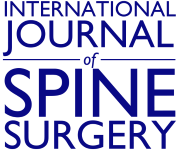When I was a resident with Dr. Paul Bucy in 1970, the early work of Dr. Ralph Cloward in the surgical management of cervical spine degenerative disease was the current thinking. The simplicity of the procedures, the clever instrumentation, and the initial clinical results of cervical interbody fusion were impressive.
In the Pacific Northwest, fishing and crabbing, topping giant trees in the forests, and working in construction along the powerful rivers of the region—all the purview of young men—resulted in a disproportionate number of patients aged in their 20s with serious clinical manifestations of cervical disc degeneration. Their first anterior cervical discectomy and fusion solved the problem, as did the second procedure a year or 2 later, but several more years found them returning with additional adjacent-level symptoms. I asked myself, “Am I not actually, in 1 hour in the operatin, advancing the natural degenerative process by my surgical fusion? Am I accelerating adjacent level degeneration?”
At the completion of my residency, Dr. Bucy had said, “Remember, Vince, I didn’t just train you to practice neurosurgery but to advance it, because if you don’t, who’s going to do it?” I still recognize the universality of the message.
In 1991 in Capri, away from the hustle and bustle of back home, all the specifications and designs for the artificial disc, including a diarthrodial joint concept and the attending instrumentation, were conceived and preliminarily designed. It must be safe, allow no room for surgical error, replicate fully all motion and cushioning functions of the normal disc, and be inherently stable from day 1. It should require no screws, have a lifespan of at least 20 years—preferably a lifetime—and require no external temporary postoperative collar support. Additionally, the patient should be able to return to full work within days of the procedure.
I was convinced that the anatomical and functional features of the normal disc were there for a reason; a simple hinge was not the answer, shock absorption was required, and an upright animal model for testing was essential. From Chimpanzee Gigi, a remnant of the Sputnik space age, we were able to create the first chimp bone bank. That allowed us to proceed with a 2.5-year survival study in upright adult male chimpanzees (Drs. Paul Anderson and John Heller).
Could an artificial disc be both durable and resilient? The materials engineer at the Southwest Research Institute suggested polycarbonated polyurethane. Bob Wade at the University of California, Berkeley was able to modify the polymer, adding a silicon end group. A unique shape and layering manufacturing process were developed to account for the subtleties of multidirectional movement and load variations. Brilliant Swiss engineer Alex Kunzler designed precision, ultra-thin right-angle bits and drill and rig to exactly replicate the shape of the artificial disc shells so perfectly that once inserted, they were like a tight socket and could not move.
The energy created in the side rooms of major meetings by unscheduled presentations of the artificial cervical disc (Andy Handwerker) was quickly noted and, ultimately, through the work of many, gave rise to the concept of creating an society for spine arthroplasty.
Footnotes
Funding The author received no financial support related to this contribution.
Disclosures Founder, Chairman, and Chief Medical Officer at PreActive Technologies.
- This manuscript is generously published free of charge by ISASS, the International Society for the Advancement of Spine Surgery. Copyright © 2025 ISASS. To see more or order reprints or permissions, see http://ijssurgery.com.







